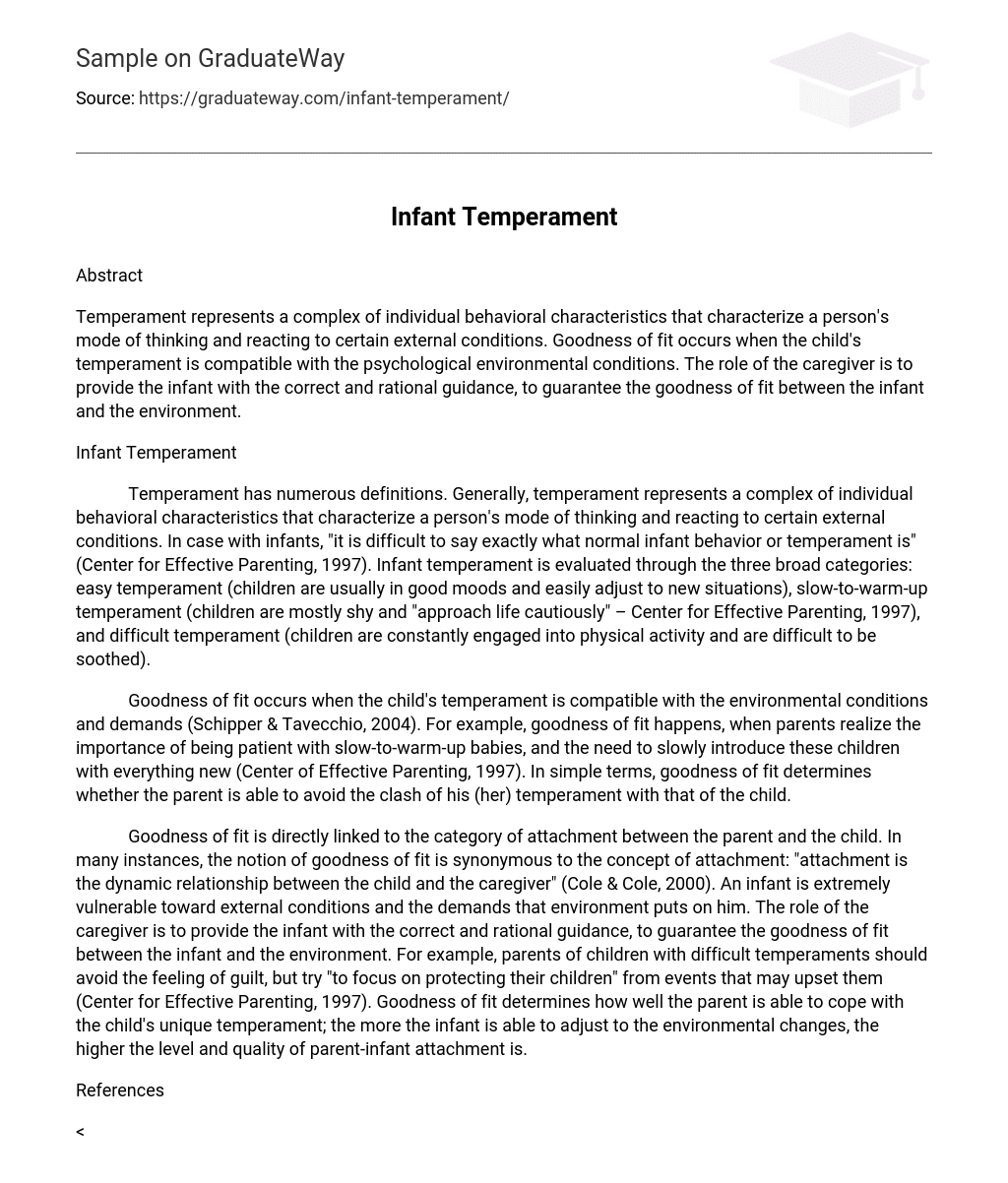Abstract Temperament represents a complex of individual behavioral characteristics that characterize a person’s mode of thinking and reacting to certain external conditions. Goodness of fit occurs when the child’s temperament is compatible with the psychological environmental conditions. The role of the caregiver is to provide the infant with the correct and rational guidance, to guarantee the goodness of fit between the infant and the environment.
Infant Temperament Temperament has numerous definitions. Generally, temperament represents a complex of individual behavioral characteristics that characterize a person’s mode of thinking and reacting to certain external conditions. In case with infants, “it is difficult to say exactly what normal infant behavior or temperament is” (Center for Effective Parenting, 1997). Infant temperament is evaluated through the three broad categories: easy temperament (children are usually in good moods and easily adjust to new situations), slow-to-warm-up temperament (children are mostly shy and “approach life cautiously” – Center for Effective Parenting, 1997), and difficult temperament (children are constantly engaged into physical activity and are difficult to be soothed). Goodness of fit occurs when the child’s temperament is compatible with the environmental conditions and demands (Schipper & Tavecchio, 2004). For example, goodness of fit happens, when parents realize the importance of being patient with slow-to-warm-up babies, and the need to slowly introduce these children with everything new (Center of Effective Parenting, 1997).
In simple terms, goodness of fit determines whether the parent is able to avoid the clash of his (her) temperament with that of the child. Goodness of fit is directly linked to the category of attachment between the parent and the child. In many instances, the notion of goodness of fit is synonymous to the concept of attachment: “attachment is the dynamic relationship between the child and the caregiver” (Cole & Cole, 2000). An infant is extremely vulnerable toward external conditions and the demands that environment puts on him. The role of the caregiver is to provide the infant with the correct and rational guidance, to guarantee the goodness of fit between the infant and the environment. For example, parents of children with difficult temperaments should avoid the feeling of guilt, but try “to focus on protecting their children” from events that may upset them (Center for Effective Parenting, 1997).
Goodness of fit determines how well the parent is able to cope with the child’s unique temperament; the more the infant is able to adjust to the environmental changes, the higher the level and quality of parent-infant attachment is. References Center for Effective Parenting. (1997). Infant temperament. Retrieved August 20, 2008 from http://www.parenting-ed.org/handout3/General%20Parenting%20Information/infant%20temperament.htm Cole, M.
; Cole, S.R. (2000). The development of children. 4th edition. New York: Worth Publishers.
Schipper, J.C. ; Tavecchio, L.W. (2004). Goodness of fit in center day care: relations of temperament, stability, and quality of care with the child’s adjustment. Early Childhood Research Quarterly, 19 (2): 257-272.





